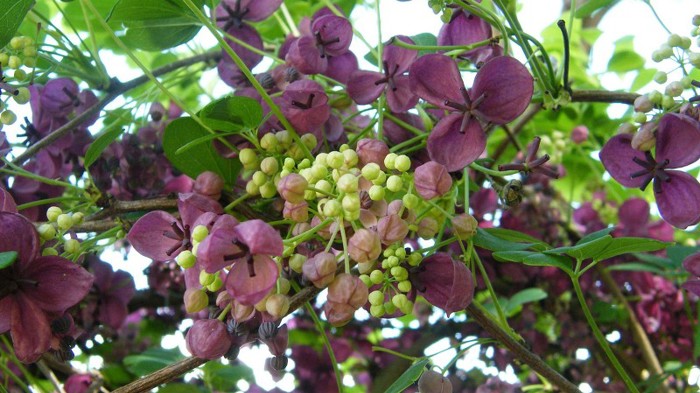Akebia


Akebia
Notify council
What does it look like?
Akebia grows as a twining vine or ground cover. It has five oval-shaped leaflets (each 3cm long) that meet at a central stem to create a hand shape. From August to October it has chocolate/purple-coloured flowers, which have an odour that is similar to chocolate or vanilla. The fruits are purple-violet, sausage-shaped pods up to 100mm long.
Akebia grows in open to semi-shaded sites along forest edges or road sides, where it climbs over structures or trees. In Northland, it has been recorded growing over trees, fences and hedges, along roadsides and in gardens.
Why is it a problem?
Akebia grows rapidly (up to 6-14m in a single growing season) to form dense patches that out-compete and kill ground cover, shrubs and young trees. It is tolerant to shade, drought and frost and can invade a range of habitats. Once established, its dense growth prevents seed germination and seedling establishment of native plants.
Akebia mainly spreads vegetatively (for example, from plant fragments or rooting stems). Its high growth rate also means infestations grow rapidly to spread over a wide area. Localised spread can be rapid but range expansion is relatively slow.
Related information
Management programme
Eradication
National Pest Plant Accord (NPPA)
Unwanted organisms
Rules
What is council doing about this?
More images

Photo credit: Wikimedia

Photo credit: Weedbusters

Photo credit: Wikimedia

Photo credit: Leonora Ellie Enking

